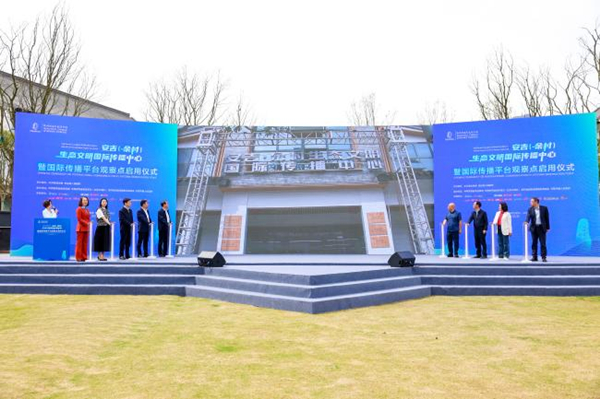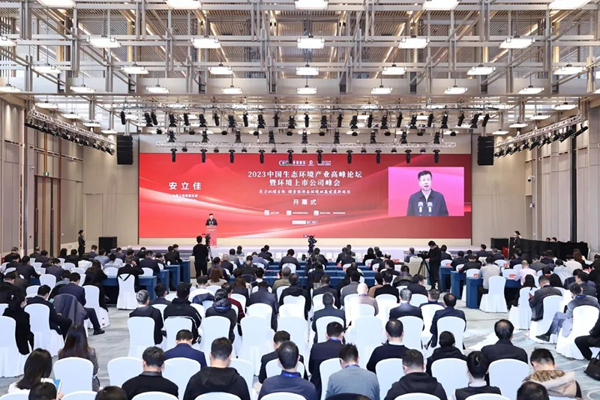Steps taken to drop housing stock
China will keep an open mind on policies to clear the backlog of unsold houses, a signal that led analysts to expect the introduction of new measures and additional funding as part of Beijing's efforts to unleash more demand potential and stabilize the property market.
Addressing the issues related to existing housing stock and land utilization requires both creative initiatives with broadening perspectives, and steady progress in a prudent manner, according to a recent executive meeting of the State Council, the country's Cabinet, in early June.
It was stressed at the meeting that the development of the real estate industry has a direct bearing on the well-being of the people and the overall stability of the economic and financial system.
There was a call at the meeting to accelerate the establishment of new models for real estate development, improve the market-oriented plus government-subsidized housing supply system, and reform fundamental institutional frameworks, so as to promote the steady and sound development of the real estate market.
The meeting's emphasis on inventory clearance, after the adjustments recently made to the down payment ratios for first homes in most cities, indicates the government's recognition of the urgent need to address the existing surplus of housing units, analysts said.
The minimum down payment ratios for mortgages were revised in mid-May, setting them at no less than 15 percent for first-home buyers and 25 percent for second-home buyers, according to a joint notice issued by the People's Bank of China and the National Financial Regulatory Administration.
The country's central bank also further lowered mortgage interest rates, as well as that of the housing provident fund — a long-term housing savings plan made up of compulsory monthly deposits by both employers and employees.
The new policy has slashed the minimum down payment ratio for personal homebuyers to an unprecedented low. Moreover, with mortgage interest rates already at historically low levels, this latest adjustment is set to further refresh the record-breaking lows, said Yan Yuejin, director of Shanghai-based E-house China R&D Institute.
According to data from China Real Estate Information Corp, new home sales in 30 key cities, including Beijing, Shanghai and Tianjin, reached a total of 10.81 million square meters in May. This represents a 4 percent increase over the previous month and a 23 percent growth when compared to the average of the first quarter.
While a combination of policy measures has led to a recovery in certain key cities, the ongoing efforts to clear housing inventory still face significant pressure, Yan said.
In April, the inventory of new residential properties in 100 major cities across China, as shown by a report from E-house China R&D Institute, reached 50.02 million sq m. Concurrently, the average time required to clear this inventory stood at 26.5 months, doubling the reasonable threshold and hitting a historical peak.
The persistence of high inventory levels and prolonged clearance periods indicates that further efforts may be required to achieve a more sustainable market condition, said Guan Rongxue, a senior analyst at Zhuge Real Estate Data Research Center.
This is not the first time that the importance of inventory clearance has been emphasized. A tone-setting meeting on April 30 held by the Political Bureau of the Communist Party of China Central Committee, set in motion the fresh wave of efforts to reduce existing housing inventory and promote a more balanced market.
On the heels of the political bureau meeting, the Ministry of Natural Resources issued a notice, specifically addressing cities where the clearance period for residential properties exceeds 36 months, and emphasizing the suspension of new land auctions for residential development.
In cities where the clearance period for residential properties falls between 18 and 36 months, the notice entails dynamically determining the upper limit of newly allocated residential land based on the area of existing inventory that has been cleared within the year.
Various cities are actively exploring approaches to integrate inventory clearance efforts with affordable housing initiatives.
Lin'an district of Hangzhou in Zhejiang province recently announced plans to purchase a batch of commercial properties for use as public rental housing. The district has set specific conditions for the acquisition, including whole-building purchases, a required allocation of parking spaces and the properties being either completed or expected to be completed within a year.
State-owned enterprises in Suzhou, Jiangsu province, have been encouraged to acquire a portion of the existing inventory of residential properties at fair prices for conversion into affordable housing options for their staff.
The central bank has provided 300 billion yuan ($42.3 billion) to 21 financial institutions to lend to state-owned enterprises so they can buy unsold apartments that have already been built for affordable housing projects.
The purchase of affordable housing projects by state-owned enterprises is not meant to be a simplistic solution involving large-scale acquisitions. Instead, it serves as a measured response to fill temporary gaps in the market, said Xu Hongcai, deputy director of the China Association of Policy Science's Economic Policy Committee.
By considering local development plans and demand, these enterprises can act as catalysts and aim to supplement and address temporary market shortages, Xu added.
In the current residential property purchasing policies in China, down payment requirements and mortgage interest rates have reached historical lows, providing substantial support to prospective homeowners. Looking ahead, attention will shift to the fiscal and taxation aspects of the real estate market as part of ongoing efforts to maintain stability, said Zhao Wei, an analyst at Founder Securities.
In this round of measures, the emphasis will be on providing personal income tax rebates to individuals who meet specific conditions when purchasing a home, Zhao said.
However, there have been no significant adjustments to policies regarding tax and fee incentives for homebuyers or the special deduction of personal income tax for housing loans. These areas may be potential components of future measures to stabilize the real estate market, Zhao added.
In addition, in an effort to reduce the financial burden on homebuyers and create a more favorable market environment, a unified reduction at the national level in terms of property transfer tax rates might be a viable option, said Chen Wenjing, director of research at China Index Academy.
But in smaller cities, where housing prices are generally lower and the amounts of property transfer taxes are not substantial, the overall impact of more significant property transfer tax incentives on the real estate market may be weaker, Chen added.
wangkeju@chinadaily.com.cn





